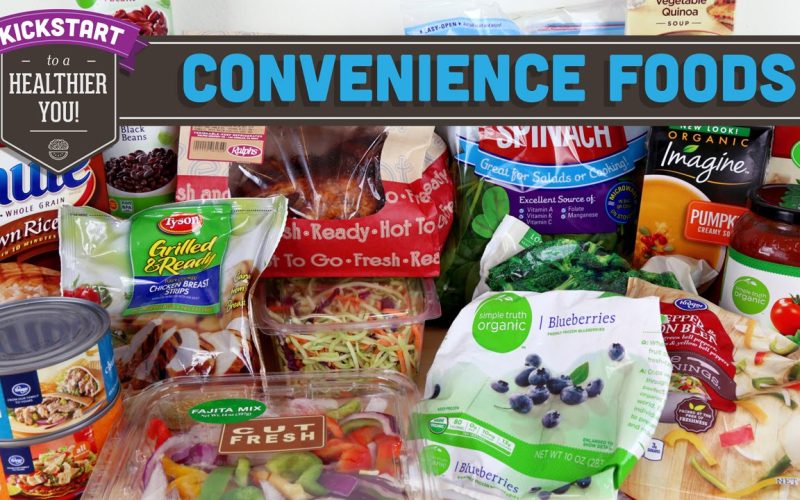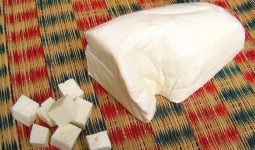Any food served as a frozen meal or processed/packaged mix that is easy to prepare is known as convenience food.
Such food can also be prepared through commercial processes to enable easy consumption.
A convenience food can also be known as a ‘ready-to-eat’ meal as it no longer requires extra preparation.
Convenience food can consist of the following:
- Fast food.
- Canned foods such as pasta and vegetables.
- Beverages such as milk, yogurt, soft drinks, and fruit juices.
- Fruits, nuts, and vegetables in either processed or fresh conditions.
- Processed and packaged cheeses and meats.
People who have little or no cooking skills, as well as those who lack the time to follow different recipes for food preparation, would find convenience food very useful.
Most of these foods require only heating before consumption, while some play the role of ingredients.
A Brief History of Convenience Food
Canned food was developed mainly for the military in the 19th century but gained more popularity during World War I.
Meatpacking was among the earliest processed foods produced on an industrial scale.
Furthermore, animals could be reared, killed, and butchered hundreds (which later became thousands) of kilometers away from those that consume meat.
This was due to the invention of cars with refrigeration systems in 1878.
Different Types of Convenience Food
Under foods, we have the following:
- Ready-to-cook foods: Foods in this category include mixes, dosa, instant idli, and noodles.
- Ready-to-eat foods: These can be eaten directly from the package with little or no heating, preparation, or thawing.
They include:
- Dairy snacks, e.g., butter, cheese spread, processed cheese, etc
- Bakery foods, e.g., cake, biscuits, bread, cookies, and pizza.
- Frozen foods, e.g., chicken, ice cream, chocolate, kebab, etc
- Fried foods, e.g., pretzels, potato chips, wafers, plantain, chin-chin, etc
- Extruded meals, e.g., soya-based foods, cereal, and pulse-based foods.
- Supplements, e.g., fruit chutney, pickles, oats, corn, etc
- Ready-to-fry foods include chicken, wafers, beef, chips, and finger foods.
- Ready-to-use foods require frying, reconditioning, or cooking before being consumed.
They include:
- Freshly cut vegetables, such as beans, lettuce, cabbage, etc., are chopped, shredded, or sliced and packaged at an adaptable temperature.
- Masalas, e.g., curry masala, garlic & ginger paste, chicken mix, meat masala, and several others.
- Ready to reconstitute foods: Examples include weaning mixes, khoa powder, and instant ice cream mix.
- Canned foods: They include fish, chicken, vegetables, fruits, meat, curry and pulps.
- Breakfast cereals: These are our regular breakfast cereals, and examples include golden morn and other millet-based flakes, corn flakes, various pops, fruits and fiber, and wheat flakes.
Under beverages, we have:
- Ready-to-serve beverages: These beverages require some preparation before they are served. They are made over or diluted before consumption, including chicken soup, different flavors of fruit concentrates, soup, Tropicana, instant soup powders, etc.
- Ready-to-drink beverages: These beverages, such as mango, pineapple, orange, apple, strawberry, black currant, and milk/yogurt-based, can be consumed straight from their packages.
These beverages have different shelf lives. Natural fruit juices are sold in tetra packs, cold coffee has a shelf life of 6 months, and malt shakes and Horlicks have a shelf life of 4 months and are also sold in tetra packs.
Health and Environmental Hazards of Convenience Food
Convenience food is not entirely bad, but in most cases, it undergoes intense processing and contains huge quantities of unhealthy fats, sugar, carbohydrates, and sodium.
Environmental Hazards
Convenience food that has been processed usually contains a high number of chemicals and is produced intensively, utilizing a lot of energy.
Also, the packaging used usually ends up in a landfill, where plastic contaminates the environment and takes hundreds or thousands of years to decompose.
Furthermore, foods such as vegetables, fruits, fish, whole-grain cereals, olive oil, and nuts are associated with a healthy state. All but fish have the lowest environmental effect, with fish having a remarkably lower effect than processed and red meats.
Certain fishes, such as the Atlantic salmon and bluefin tuna, are intensely overfished, and without immediate intervention, they could become extinct as they are now endangered.
Not only does the overfishing of a certain species destroy that population, but it could also seriously affect the food chain and reduce biodiversity.
Health Hazards
Daily consumption of processed foods increases the chances of kidney damage and aging because they contain genetically engineered ingredients and phosphate.
Also, constant consumption of processed foods promotes irritation and anger. That is why it is advisable to consume natural whole foods, as they assist in sustaining energy levels, leveling your mood, and giving you a relaxed and contented feeling.
Myocardial infarction, which is responsible for several total deaths in a lot of developed countries as well as in some developing countries, happens when numerous illnesses arise as a result of the deposition of fat excesses in the blood vessels.
Some of the health conditions that may arise include hypertension, stroke, obesity, and diabetes mellitus.
Taking off the exterior layers of vegetables, whole grains, and fruits could eliminate its nutrients and fiber.
Also, many nutrients could be damaged or eliminated during processing. Drying foods or subjecting them to heat may remove certain minerals and vitamins.
Sodium, saturated fats, and added sugar, which are ingredients widely utilized in the manufacturing of highly or ultra-processed foods, have become indicators of low diet quality because of their roles in high blood pressure, heart disease, and obesity.
Advantages
- There’s hardly any leftovers.
- Absence of purchasing, storing, or planning of condiments.
- In concentrated form, packaged foods are easier to transport from one location to another.
- There’s a great reduction in the time used to prepare it.
- It is easy to clean up and faster to display.
- No fear of wastage or spoilage when dealing with convenience foods.
- The cost of mass production and distribution is efficient.
- Breakfast is instant, especially with cereals.
Disadvantages
- They are usually high in sugar, fat, calories, trans fat, salt, and saturated fat.
- Convenience foods are tougher to control in terms of salt, sugar, and fat degrees.
- They lose their freshness at the end of preparation, especially when eating vegetables.
- Your meal might contain too little cheese, meat, or fish compared to what you would have had if it had been homemade.
- Baking or even cooking time is prolonged occasionally.








